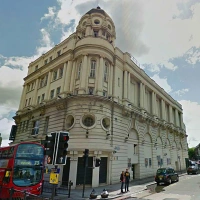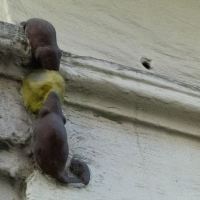Catch a train from London Bridge towards Greenwich and you’ll find yourself whisked along the entire length via a three and a half mile long viaduct; 878 brick arches which snake their way through London’s south-eastern suburbs.
Built during the reign of King William IV, this impressive piece of engineering was originally a self-contained system; The London and Greenwich Railway which, as well as being the capital’s earliest railway, also achieved two other titles- being both the first suburban commuter line and the first elevated railway in the world.
Inspired by the world’s very first passenger service which had started operating between Liverpool and Manchester in September 1830, the London and Greenwich Railway was the brainchild of Colonel George Thomas Landmann; an engineer who had developed his talents in the military.
After gaining planning permission, it was agreed that the line was to be “constructed on arches, in such a manner that passengers and carriages may pass along the streets which the line will cross without being in any way obstructed.”
From the offset the project was clearly aimed at conveying city commuters, with a report in The Observer stating that “the man of business, who goes to town daily, will save eight hours of his time per week…”
The first stone was laid in November 1833 and by the 8th February 1836 the London and Greenwich Railway was open for business- on the first day alone, the line carried 13,000 eager passengers.
At this early point however, the route had not yet reached London Bridge- trains could only run from New Cross to a temporary terminal on Bermondsey’s Spa Road (more of which in part two). The viaduct was fully completed on the 14th December 1836.
During the line’s earliest days, two other innovations were tested on the viaduct.
Originally, Colonel Landmann had suggested that there was money to be made by converting many of the arches into cheap housing- and a small collection of show homes were indeed added.
The residents who spent time in these “neat dwelling houses” apparently agreed that “the passing of the trains over is said to be only like the noise resembling thunder, but from the rapidity of the motion is away in an instant.”
Despite this positive feedback the idea never took off, thus leaving the arches ripe for occupation by garages, warehouses and the occasional trendy bar.
The other novelty to be given a trial was a pedestrian walkway which ran directly alongside the tracks and could be accessed by the public for a small toll. However, when directors realised just how profitable their railway had become, this path was promptly taken over by the iron road.
Nowadays therefore the only way to follow the viaduct on foot is by weaving your way through its many arches at street level… which is a good thing if you enjoy exploration as there is plenty of history to discover down below…




















Another excellent snippet of London’s history.
Many thanks, Nick.
It’s always a good day when I see ‘View From The Mirror’ in my inbox. Thank you. Looking forward to part 2.
You’re most welcome, Damian. Thanks for your kind words.
[…] An historical walk along the London Bridge to Greenwich viaduct. […]
I agree with Damien above, always good to see you in the in box. another great post, where would all those motor garages and lock ups be without his structure, if they could speak they would tell some stories!
You’re right there! Cheers, Richard 🙂
[…] Posted by View from the Mirror on June 21, 2013 Posted in: London History, Tales From the Terminals. Tagged: Bermondsey, Bill Sikes, Dr Salter, Druid Street, James Braidwood, Lake Havasu, London, London Bridge, McCulloch, Rennie, Shard, Spa Road, Stainer Street, Thomas Becket, Tooley Street, Trabbant. Leave a Comment This is part two in a series examining the history on and around the arches of the London and Greenwich Railway which was constructed in the 1830s. To read part one, please click here. […]
[…] of the London and Greenwich Railway which was constructed in the 1830s. To read part one, please click here. To read part two, please click […]
[…] London and Greenwich Railway viaduct which was constructed in the 1830s. To read part one, please click here. To read part two, please click here. To read part three, please click […]
[…] London and Greenwich Railway viaduct which was constructed in the 1830s. To read part one, please click here. To read part two, please click here. To read part three, please click here. To read part four, […]
[…] extension required the construction of a brick viaduct comprising 290 arches- very similar to the London and Greenwich Railway which was constructed on the opposite side of the capital during the same […]
[…] View from the mirror – A taxi Driver’s London Secrets of the viaducts: Walking the London to Greenwich Arches Part One […]
Where did you find image six? Thanks!